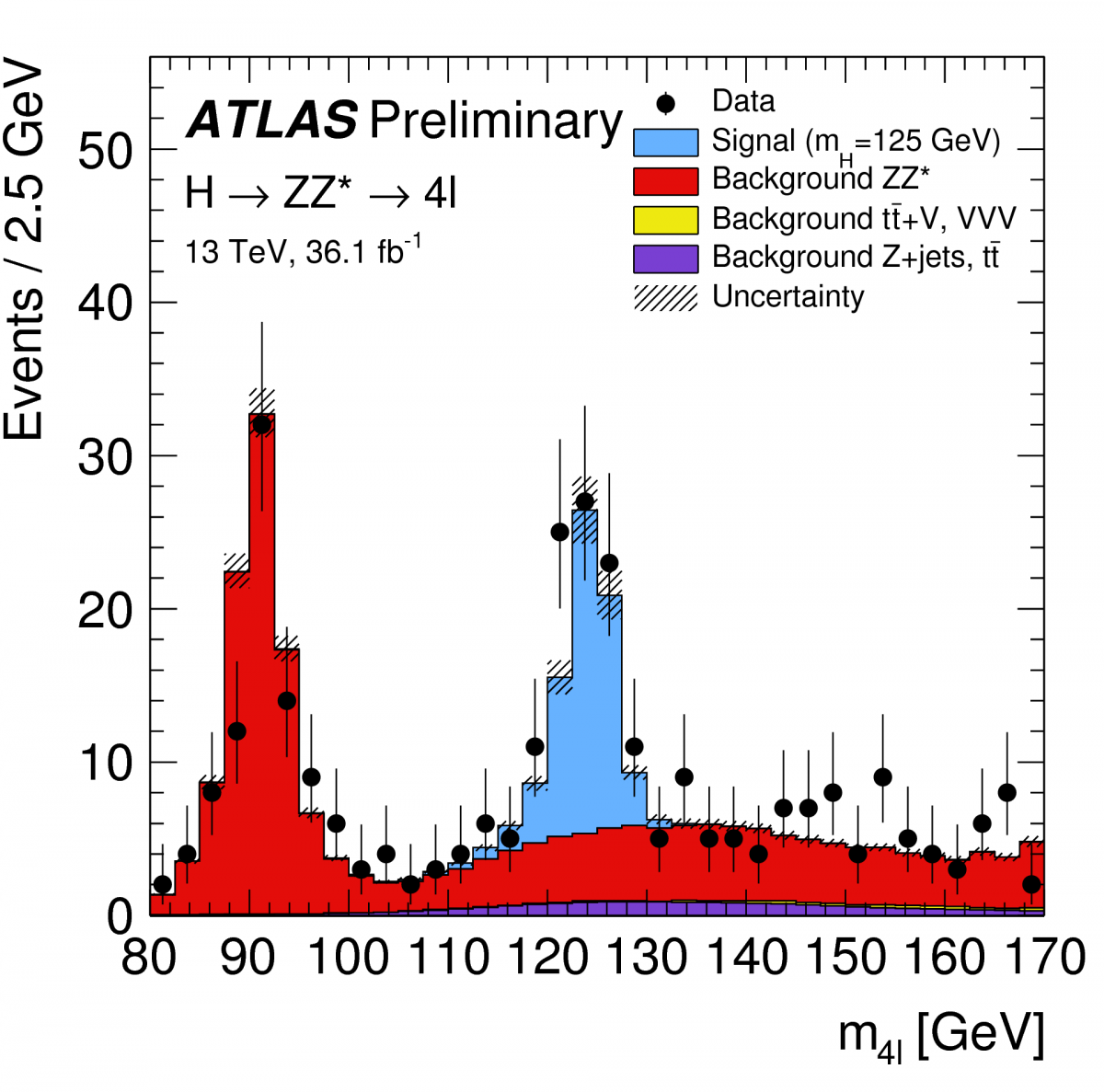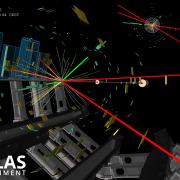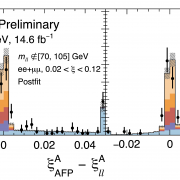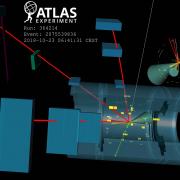Access to Collaboration Site and Physics Results

The discovery of a Higgs boson in 2012 by the ATLAS and CMS experiments marked a milestone in the history of particle physics. It confirmed a long-standing prediction of the Standard Model, the theory that comprises our present understanding of elementary particles and their interactions.
With the huge amount of proton–proton collisions delivered by the LHC in 2015 and 2016 at the increased collision energy of 13 TeV, ATLAS has entered a new era of Higgs boson property measurements. The new data allowed ATLAS to perform measurements of inclusive and differential cross sections using the “golden” H→ZZ*→4ℓ decay.
The four-lepton channel, albeit rare (0.012% branching fraction into final states with electrons or muons), has the clearest and cleanest signature of all the possible Higgs boson decay modes. This is due to the channel’s small background contamination. Figure 1 shows a narrow resonant peak at 125 GeV in the reconstructed invariant mass on top of a locally relatively flat background distribution dominated by (non-resonant) qq→ZZ* production.

The Higgs boson’s transverse momentum can be used to probe different Higgs production mechanisms and possible deviations from the Standard Model interactions. Figure 2 shows the measured differential cross section of the four-lepton transverse momentum (pT4l) compared to various Standard Model predictions.
By studying the number of jets produced in these events, as well as the transverse momentum of the leading jet, ATLAS can probe and help improve the theoretical modelling of Higgs boson production via gluon fusion (ggF). The measured and predicted differential cross sections as a function of the jet multiplicity are shown in Figure 3.
Several differential cross sections have been measured for observables sensitive to Higgs boson production and decay, including kinematic distributions of the jets produced in association with the Higgs boson. Good agreement is found between the data and Standard Model predictions. The measurements are used to constrain anomalous Higgs boson interactions (see Figure 4).


Links:
- Measurement of inclusive and differential fiducial cross sections in the H→ZZ*→4ℓ decay channel at 13 TeV with the ATLAS detector (ATLAS-CONF-2017-032)
- Presentation at LHCP conference by Eleni Mountricha: Higgs measurements in high resolution channels with ATLAS
- See also the full lists of ATLAS Conference Notes and ATLAS Physics Papers








